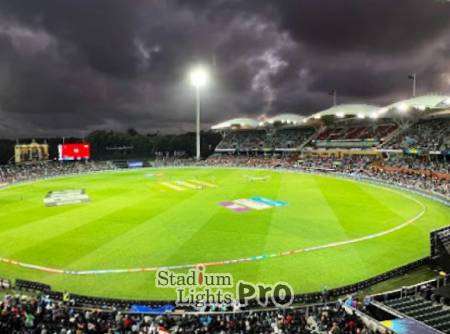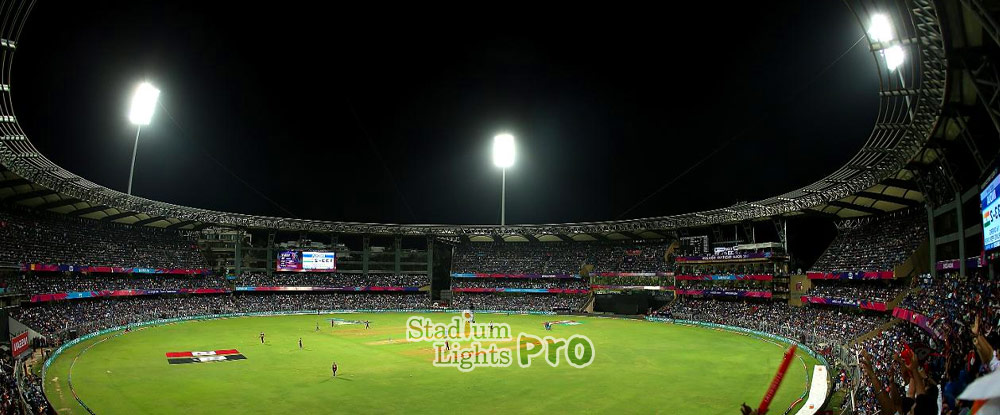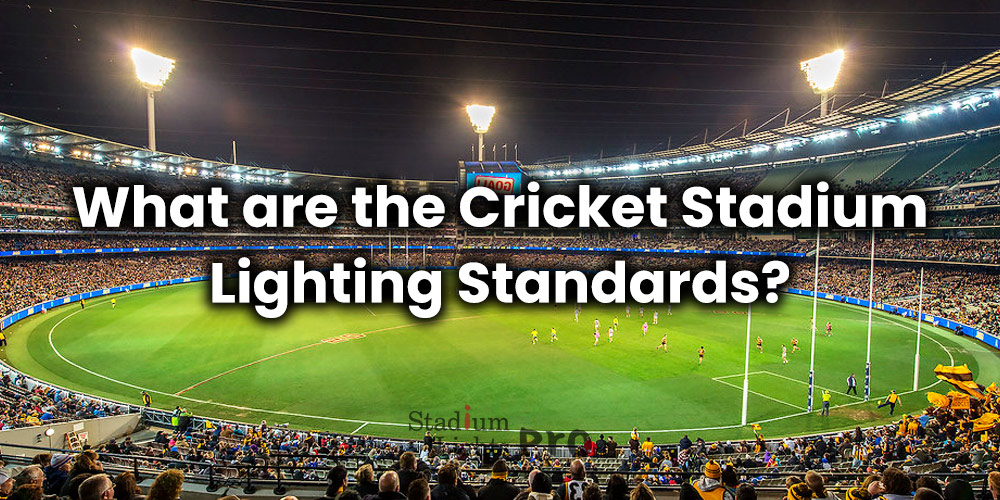Cricket stadium lighting standards have evolved over the years, aiming to provide optimal illumination for day-night matches and enhance the overall quality of the game. After reading this article, we will understand the key aspects and standards of cricket stadium lighting.
Table of Contents
ToggleWhat are the cricket stadium lighting standards?
Illumination levels
 The illumination levels in a cricket stadium are measured in lux, which refers to the amount of light reaching a surface. Different areas of the cricket ground require varying levels of illumination. The International Cricket Council (ICC) has established guidelines for lighting standards, specifying minimum and average lux levels. The playing area should typically have a minimum illumination level of 2000 lux, while the outfield and boundary areas require around 1000 lux. The pitch area, including the batting and bowling ends, should have higher illumination, preferably around 1500-2000 lux.
The illumination levels in a cricket stadium are measured in lux, which refers to the amount of light reaching a surface. Different areas of the cricket ground require varying levels of illumination. The International Cricket Council (ICC) has established guidelines for lighting standards, specifying minimum and average lux levels. The playing area should typically have a minimum illumination level of 2000 lux, while the outfield and boundary areas require around 1000 lux. The pitch area, including the batting and bowling ends, should have higher illumination, preferably around 1500-2000 lux.
Uniformity
Uniformity of lighting is essential to minimize shadows and ensure players have a clear view of the ball at all times. ICC guidelines recommend a uniformity ratio of 0.7 or higher. This ratio indicates the relationship between the highest and lowest illumination levels within the playing area. A higher uniformity ratio ensures consistent lighting throughout the ground, reducing the risk of misjudgments and maintaining fairness in the game.
Flicker control
Flickering lights can be distracting and adversely affect players’ concentration. To prevent such issues, cricket stadium lighting systems must have flicker control mechanisms. The lights should operate at a frequency above 1000 Hz to eliminate visible flicker. This ensures a smooth and uninterrupted lighting experience, creating an ideal environment for players and spectators alike.
Glare control
Glare can significantly impact players’ visibility, leading to difficulties in tracking the ball. To minimize glare, cricket stadium lighting must adhere to specific standards. The lighting fixtures should be positioned and shielded in a way that prevents direct light from entering players’ eyes. Anti-glare technology, such as light-diffusing panels or coatings, can also be employed to reduce the intensity of reflected light and improve overall visibility.
Energy efficiency
With increasing emphasis on sustainability, energy efficiency has become an essential consideration in cricket stadium lighting. LED (Light Emitting Diode) lighting has gained popularity due to its lower energy consumption and longer lifespan compared to traditional lighting systems. LED lights can provide high-quality illumination while reducing electricity costs and minimizing environmental impact. Many cricket stadiums have made the transition to LED lighting to enhance both the playing experience and their sustainability efforts.
What measures can be taken to ensure that the cricket stadium meets the necessary lighting standards?

Lighting design and layout
Engage professional lighting designers and consultants to develop a comprehensive lighting plan for the stadium. The plan should consider factors such as uniformity, illumination levels, glare control, and energy efficiency. The layout should be designed to provide consistent lighting across the playing area and minimize shadows.
Quality lighting fixtures
Install high-quality LED lighting fixtures that comply with the required standards. These fixtures should be capable of delivering the desired illumination levels, flicker-free operation, and effective glare control. Ensure that the fixtures are designed to provide uniform lighting distribution across the ground.
Proper positioning and mounting
The positioning and mounting of lighting fixtures play a crucial role in meeting lighting standards. Fixtures should be strategically placed at appropriate heights to ensure consistent illumination and minimize shadows. Careful consideration should be given to the angle and tilt of the fixtures to avoid direct glare.
Lighting controls
Implement advanced lighting control systems to manage the illumination levels efficiently. These systems can include dimming capabilities, allowing adjustment of lighting levels based on natural light conditions or specific match requirements. Timers and sensors can also be utilized to optimize energy usage and ensure lights are turned on and off at the appropriate times.
Regular maintenance and inspection
Conduct regular maintenance and inspections of the lighting system to ensure proper functioning and adherence to standards. This includes cleaning fixtures, checking for any damaged or malfunctioning components, and verifying illumination levels and uniformity.
Compliance with ICC guidelines
Familiarize yourself with the lighting standards set by the International Cricket Council (ICC) and ensure that your stadium meets or exceeds these guidelines. ICC guidelines provide valuable recommendations regarding illumination levels, uniformity, flicker control, and glare reduction.
Photometric testing
Perform photometric testing to verify the actual lighting levels and uniformity in different areas of the stadium. Photometric measurements can help identify any deficiencies or areas that require adjustments or improvements.
Regular auditing and certification
Engage third-party experts or auditors to assess and certify the stadium’s lighting system periodically. This ensures that the lighting standards are consistently met and provides assurance to players, officials, and spectators.
Conclusion
Cricket stadium lighting standards play a vital role in ensuring optimal visibility, fair play, and an enjoyable experience for players and spectators. From illumination levels and uniformity to flicker control and glare reduction, these standards are designed to provide the best possible lighting conditions. Furthermore, energy efficiency considerations have led to the adoption of LED lighting technology in cricket stadiums worldwide. By adhering to these standards, cricket stadiums can offer a safe and visually appealing environment, contributing to the overall growth and success of the sport.

